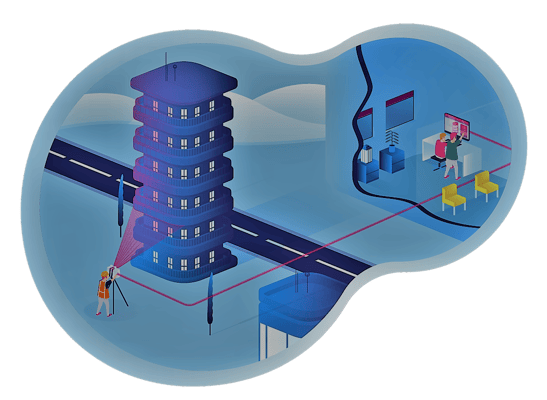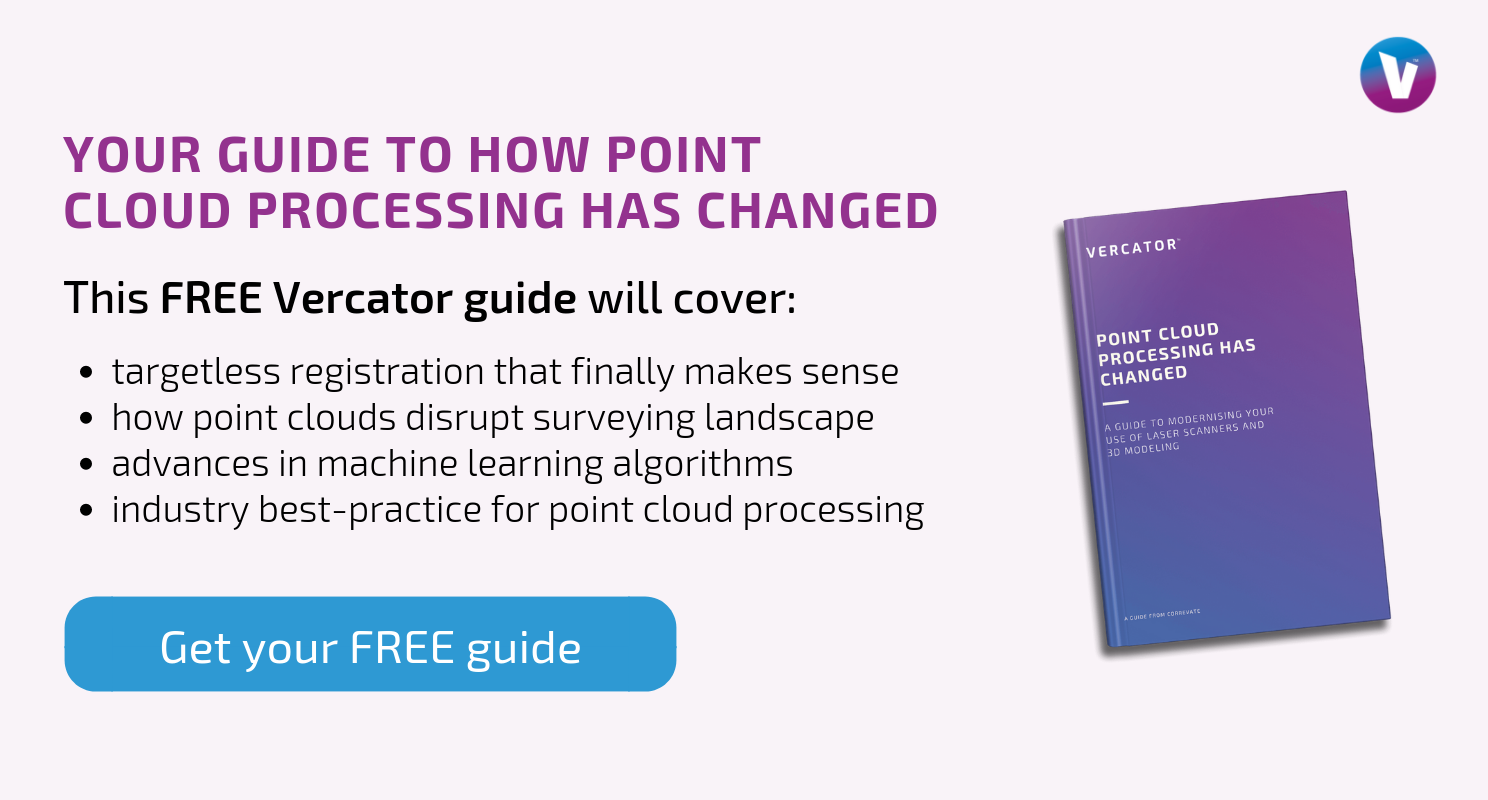3 benefits of improving point cloud technology

Point clouds are an information delivery system. They allow for the detailed mapping of physical space and flexible access to that information. This can improve decisioning, deliver efficiency and enable flexible workflows. It can even reinvent business models. Point clouds create real life 3D models and allow for iterative design processes. They make the digital manipulation of physical space easy and effective. Here, we will explore 3 substantial impacts of the wider application of point cloud technology.
1. Coordination for project management
Project management is where point clouds first came to prominence. Construction teams and engineers benefit greatly from the ability to scan a scene, build 3D models, develop ‘digital twins’ of physical objects (particularly machinery), and engage in iterative project development.
Architectural design has become highly digitised in recent years. Computer-aided design (CAD) has given way to BIM (Building Information Modelling) as more information is included in increasingly sophisticated storage systems. Point clouds provide a way to build that design on schematics grounded on the actual area construction will take place. Scans can be taken throughout the construction project and compared to planning.
Renovations are an area where laser scans and point clouds can deliver even greater value. The need to directly interface with existing structures means it is critical to know exactly where you are starting. Contractors are able to create all of their site measurements in a single visit and coordinate planning from that point onwards. Communication is improved as teams in multiple locations can interact with data as if they were on all site — allowing fewer people to work more jobs and optimising time spent on location.
2. Iterative design and development
Iterative design is one of the single greatest benefits of computer-aided design (CAD) models. Point clouds bring CADs in touch with reality. A scan can be used to build a design or be used to compare designs against production output.
Traditionally, large-scale architectural projects were at the forefront of using point clouds to aid in design. High-end manufacturing was quick to follow, using laser scans to guide production and compare output to designs. However, the growing affordability of this technology has greatly expanded the types of projects that can benefit as a result. Point clouds are now providing benefit to businesses as far afield as clothing producers, BBQ pit manufacturers and designers of advanced aerospace products.
Historically, the use of this technology has been limited by costs. As the market matures, prices are reducing. This is allowing more design processes to be aided by the benefits of point clouds, precise measurements and 3D models of existing physical space and objects.
3. Post-hoc BIM (Building Information Modelling)
Building Information Modelling (BIM) has taken the construction world by storm. It is an advanced form of computer-aided architectural design that includes functional information, design features and collaborative working capabilities — often accessed via database storage.
There is significant debate about what types of 3D models ‘deserve’ the moniker ‘BIM’. Architectural 3D models, however, like traditional architectural designs, follow their buildings after construction to aid in their maintenance. Point clouds make it easy for buildings and facilities managers to construct BIM-like 3D models after the fact (or update existing BIM models post renovations) improving their ability to maintain structures and infrastructure.
This is vital to managers of ageing and complex facilities. Point clouds allow for the centralised storage of maintenance information and can even be paired with other technologies to enable predictive maintenance through airborne sound analysis, thermal video analysis or x-ray cameras. This is in addition to the more traditional benefits offered by 3D building models, such as the ability to direct repair teams and compile regular reports of ongoing costs with a detailed breakdown of sourcing. The number of facilities that can take advantage of this technology is being expanded by the maturation of the market.
Summary: Point clouds deliver benefit wherever precise physical measurements are important
Point clouds enable the storage and manipulation of precise 3D data. They provide a powerful aid to any industry, business or project that depends on measurements. They streamline workflows, improve communication, and deliver efficiency. The application limits of this technology are only tied to its cost-effectiveness.
Point cloud processing, however, is changing. Advances in vector analysis have made targetless registration of point clouds fast, finally preventing the need to trade time save in the field for time spent in the office. This is dropping costs of point cloud creation and increasing the number of industries, businesses and projects that can gain access to this technology. The challenge for businesses is becoming the need to acquaint themselves with the improvements point clouds can deliver. It is an exciting time to engage with 3D models.
Tags: point clouds

